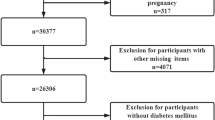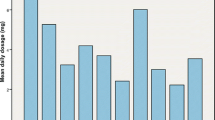Abstract
Glaucoma is a leading cause of irreversible visual impairment and blindness worldwide. Previous genome-wide association studies have identified caveolin-1 (CAV1), ATP-binding cassette A1 (ABCA1), and forkhead box C1 (FOXC1) loci associated with primary open angle glaucoma (POAG), a major subtype of glaucoma. This study aimed to fine map the association pattern of FOXC1 locus with POAG and determine the correlations of FOXC1, ABCA1, and CAV1 variants with ocular and lipidemic parameters in southern Chinese population. In total, 1291 unrelated Han Chinese subjects were recruited, including 301 high-tension glaucoma (HTG), 126 normal-tension glaucoma (NTG), and 864 control subjects. Twelve variants in FOXC1 locus, and two variants in ABCA1 and CAV1 genes, were genotyped by TaqMan assays. Genetic risk score and genotype–phenotype correlation analyses were conducted. In the FOXC1 locus, LOC102723944 rs6596830, rather than previously reported rs2745572, showed significant association with POAG (P = 8.61 × 10–4, odds ratio (OR) = 0.75) and HTG (P = 3.68 × 10–3, OR = 0.75). ABCA1 rs2487032 was also significantly associated with POAG (P = 3.00 × 10–5, OR = 0.70) and HTG (P = 2.08 × 10–4, OR = 0.70). Joint analysis showed that carriers of homozygous non-protective alleles of ABCA1 rs2487032 and LOC102723944 rs6596830 had 2.99-fold higher risk of POAG (P = 1.27 × 10–3) when compared to those carrying homozygous non-risk alleles. Patients with POAG carrying ABCA1 rs2487032 G allele had higher HDL cholesterol, and those with LOC102723944 rs6596830 A allele had lower LDL. This study revealed individual and joint association of ABCA1 and LOC102723944 variants with POAG in southern Chinese population. Subjects carrying non-protective alleles had increased risk to POAG, and corresponding genotypes would affect the lipid profiles.


Similar content being viewed by others
Data availability
The data can be made available upon reasonable request to the corresponding authors.
References
Ahmad H et al (2018) Clinical and functional characterization of a missense ELF2 variant in a CANVAS family. Front Genet 9:85
Anderson DR, Chauhan B, Johnson C, Katz J, Patella VM, Drance SM (2000) Criteria for progression of glaucoma in clinical management and in outcome studies. Am J Ophthalmol 130:827–829
Bailey JN et al (2016) Genome-wide association analysis identifies TXNRD2, ATXN2 and FOXC1 as susceptibility loci for primary open-angle glaucoma. Nat Genet 48:189–194
Barrett JC, Fry B, Maller J, Daly MJ (2005) Haploview: analysis and visualization of LD and haplotype maps. Bioinformatics 21:263–265
Bonnemaijer PWM et al (2018) Genome-wide association study of primary open-angle glaucoma in continental and admixed African populations. Hum Genet 137:847–862
Carreon T, van der Merwe E, Fellman RL, Johnstone M, Bhattacharya SK (2017) Aqueous outflow—a continuum from trabecular meshwork to episcleral veins. Prog Retin Eye Res 57:108–133
Chen Y et al (2014) Common variants near ABCA1 and in PMM2 are associated with primary open-angle glaucoma. Nat Genet 46:1115–1119
Gharahkhani P et al (2014) Common variants near ABCA1, AFAP1 and GMDS confer risk of primary open-angle glaucoma. Nat Genet 46:1120–1125
Guan FH et al (2017) The antiproliferative ELF2 isoform, ELF2B, induces apoptosis in vitro and perturbs early lymphocytic development in vivo. J Hematol Oncol 10:75
Hysi PG et al (2014) Genome-wide analysis of multi-ancestry cohorts identifies new loci influencing intraocular pressure and susceptibility to glaucoma. Nat Genet 46:1126–1130
Jung Y, Han K, Park HYL, Lee SH, Park CK (2020) Metabolic health, obesity, and the risk of developing open-angle glaucoma: metabolically healthy obese patients versus metabolically unhealthy but normal weight patients. Diabetes Metab J 44:414–425
Kapetanakis VV, Chan MP, Foster PJ, Cook DG, Owen CG, Rudnicka AR (2016) Global variations and time trends in the prevalence of primary open angle glaucoma (POAG): a systematic review and meta-analysis. Br J Ophthalmol 100:86–93
Kim MJ, Kim MJ, Kim HS, Jeoung JW, Park KH (2014) Risk factors for open-angle glaucoma with normal baseline intraocular pressure in a young population: the Korea National Health and Nutrition Examination Survey. Clin Exp Ophthalmol 42:825–832
Lei Y, Gao Y, Song M, Cao W, Sun X (2020) Retrospective case-control data of serum nitrotyrosine level and clinical biomedical indices in primary glaucoma patients. Data Brief 31:105706
Lin YC, Ma C, Hsu WC, Lo HF, Yang VC (2007) Molecular interaction between caveolin-1 and ABCA1 on high-density lipoprotein-mediated cholesterol efflux in aortic endothelial cells. Cardiovasc Res 75:575–583
Liu T, Tang C, Shi X (2020) Analysis of variants in Chinese individuals with primary open-angle glaucoma using molecular inversion probe (MIP)-based panel sequencing. Mol vis 26:378–391
MacGregor S et al (2018) Genome-wide association study of intraocular pressure uncovers new pathways to glaucoma. Nat Genet 50:1067–1071
Morrison JC, Johnson EC, Cepurna W, Jia L (2005) Understanding mechanisms of pressure-induced optic nerve damage. Prog Retin Eye Res 24:217–240
Phillips MC (2018) Is ABCA1 a lipid transfer protein? J Lipid Res 59:749–763
Shon K, Sung KR (2019) Dyslipidemia, dyslipidemia treatment, and open-angle glaucoma in the Korean National Health and Nutrition Examination Survey. J Glaucoma 28:550–556
Springelkamp H et al (2017) New insights into the genetics of primary open-angle glaucoma based on meta-analyses of intraocular pressure and optic disc characteristics. Hum Mol Genet 26:438–453
Thorleifsson G et al (2010) Common variants near CAV1 and CAV2 are associated with primary open-angle glaucoma. Nat Genet 42:906–909
Wang S, Bao X (2019) Hyperlipidemia, blood lipid level, and the risk of glaucoma: a meta-analysis. Investig Ophthalmol Vis Sci 60:1028–1043
Wang F, Gu HM, Zhang DW (2014) Caveolin-1 and ATP binding cassette transporter A1 and G1-mediated cholesterol efflux. Cardiovasc Hematol Disord Drug Targets 14:142–148
Weinreb RN, Aung T, Medeiros FA (2014) The pathophysiology and treatment of glaucoma: a review. JAMA 311:1901–1911
Xue W et al (2020) Caveolin-1 alleviates lipid accumulation in NAFLD associated with promoting autophagy by inhibiting the Akt/mTOR pathway. Eur J Pharmacol 871:172910
Yokomichi H et al (2016) Evaluation of the associations between changes in intraocular pressure and metabolic syndrome parameters: a retrospective cohort study in Japan. BMJ Open 6:e010360
Acknowledgements
We would like to express our deepest gratitude to all the participants in this study.
Funding
This work was supported by the National Natural Science Foundation of China (82171044 to M.Z.), the Shantou Medical Health, Science and Technology Project Fund (project code: 221116156495101 to T.K.N.), the Special Fund for Science and Technology of Guangdong Province (project code: 2019ST016 to C.H.; 2019ST017 to Z.W.; 2019ST024 to M.Z.), and the internal grant from the Joint Shantou International Eye Center of Shantou University and The Chinese University of Hong Kong (project code: 19-001 to C.P.P.), China, and the General Research Fund from the Research Grants Council (project code: 14105916 to C.P.P.), Hong Kong.
Author information
Authors and Affiliations
Contributions
CPP and TKN conception and design. ZW, CH, CPP, MZ and TKN financial support. ZW, CH, and MZ provision of study materials. YZ, SC, and YX collection and/or assembly of data. ZW, XLY and TKN data analysis and interpretation. ZW, XLY and TKN manuscript writing. LJC, CPP and TKN critical revision of manuscript.
Corresponding authors
Ethics declarations
Conflict of interest
The authors declare no potential conflicts of interest.
Additional information
Communicated by Shuhua Xu.
Publisher's Note
Springer Nature remains neutral with regard to jurisdictional claims in published maps and institutional affiliations.
Supplementary Information
Below is the link to the electronic supplementary material.
Rights and permissions
Springer Nature or its licensor (e.g. a society or other partner) holds exclusive rights to this article under a publishing agreement with the author(s) or other rightsholder(s); author self-archiving of the accepted manuscript version of this article is solely governed by the terms of such publishing agreement and applicable law.
About this article
Cite this article
Wu, Z., Huang, C., Zheng, Y. et al. Primary open-angle glaucoma risk prediction with ABCA1 and LOC102723944 variants and their genotype–phenotype correlations in southern Chinese population. Mol Genet Genomics 298, 1343–1352 (2023). https://doi.org/10.1007/s00438-023-02058-6
Received:
Accepted:
Published:
Issue Date:
DOI: https://doi.org/10.1007/s00438-023-02058-6




